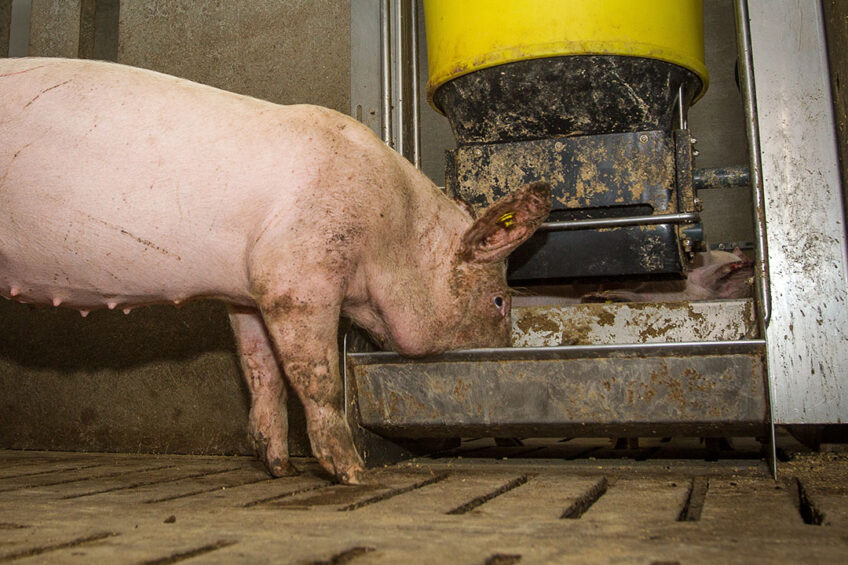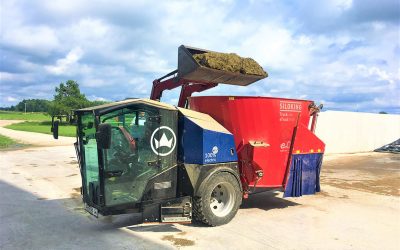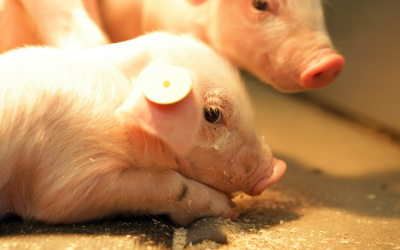Is feeding behaviour heritable in pigs?

Pork accounts for approximately 37% of the meat consumed by the world’s population. The growing demand for pork has motivated pig producers to significantly improve swine production. However, feed costs comprises nearly 70-80% of the total cost of production in the swine industry.
Increasing feed efficiency is a key factor to reduce feed consumption, feed costs, energy use, manure production and the total amount of potential greenhouse gas emission.
Feeding behaviour is one of the most important factors affecting feed efficiency, and according to research studies there is a strong genetic and phenotypic correlation between feeding behaviour and feed efficiency traits in pigs.
Therefore, a better understanding of genetics of feeding behaviour enables producers to select individuals based on their productive traits to improve feed efficiency and farm profitability.
What are feeding behaviour traits?
Feeding behaviour traits include average daily feed intake, residual feed intake, number of visits to the feeder per day, feed intake per visit to the feeder, occupational time per day at the feeder, occupational time per visit, and feeding rate.
Heritability estimates for feeding behaviour traits
Research studies suggest that feeding behaviour traits are moderate to highly heritable, thus, selection for these traits would be successful. The heritability estimates range from 0.13 to 0.62 for average daily feed intake, from 0.38 to 0.43 for number of visits to the feeder per day, from 0.35 to 0.53 for feed intake per visit to the feeder, from 0.24 to 0.49 for occupational time per day at the feeder, from 0.27 to 0.45 for occupational time per visit, from 0.29 to 0.49 for feeding rate, and 0.24 for residual feed intake.
Impact of feeding behaviour on production performance
An increase in average daily feed intake enhances feed conversion ratio, residual feed intake, average daily gain, and backfat in pigs. The number of visits to the feeder decreases as pigs mature while occupational time per day at the feeder stays constant. Increase in feed intake per visit to the feeder, and occupational time per visit to the feeder are accompanied with a rise in average daily gain.
Studies showed that the number of visits to the feeder per day is genetically independent of average daily feed intake, backfat, average daily gain, and feed conversion ratio. In addition, the feeding rate is genetically independent of back fat and residual feed intake. However, an increase in feeding rate decreases occupational time at the feeder per day. Genetic selection for residual feed intake impacts average daily feed intake, occupational time per at the feeder per day, the number of visits to the feeder per day, feed intake per visit to the feeder, occupational time per visit to the feeder, and feeding rate. Pigs selected for reduced residual feed intake eat less feed and spend less time at the feeder per day. Furthermore, they have fewer daily visits to the feeder and eat at a faster rate.
Potential candidate genes for feeding behaviour traits
The serpin family A member 3 (SERPINA3) may play direct and important biological roles in the pathways controlling residual feed intake in young pigs and it can be a candidate gene for average daily feed intake. The myc proto-oncogene protein (MYC) which is involved in a feed forward loop transcriptional network that promotes leukemic cell growth could be a candidate gene for average daily feed intake, as well. The lymphoid enhancer binding factor 1 (LEF1) that increases the production of energy based on body requirements by changing its feeding behaviour could be a candidate gene for feed intake per visit. The adaptor-related protein complex 1-associated regulatory protein (AP1AR) and paired-like homeodomain 2 (PITX2) are associated with the number of visits to the feeder per day and the mitogen-activated protein kinase 14 (MAP3K14) gene is associated with feed conversion ratio.
Concluding remarks
Feeding behaviour traits are moderate to highly heritable, therefore, it would be expected that selection for these traits would cause some changes in feeding behaviour. In addition, the pig genome has not been completely annotated; therefore, further research is required to explain the association between genes and feeding behaviour traits.










